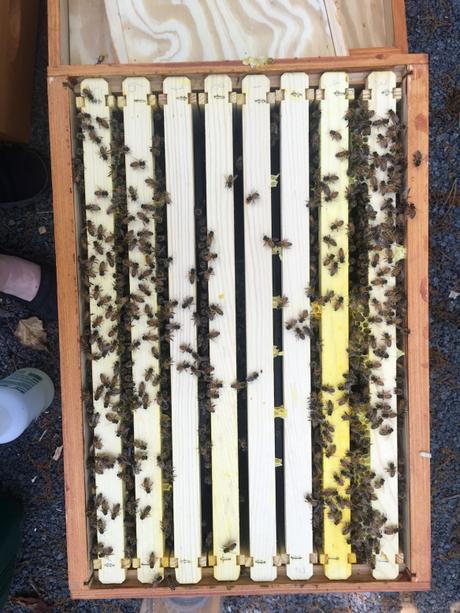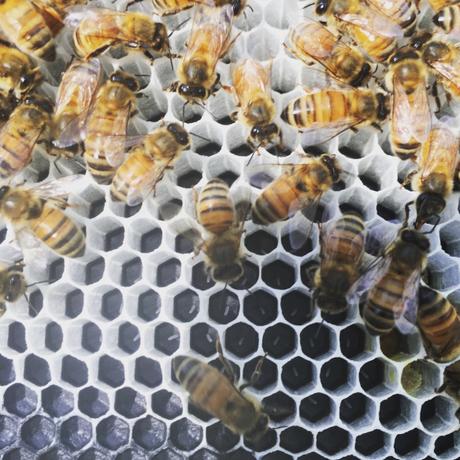It’s been two months since I started beekeeping, and they’ve kept me busy. Not because they need a great deal of maintenance; they don’t. But like any new beekeeper, I can’t stop myself from peeking into the hive and seeing what they’re up to.
Beekeeping Basics
How does one get started in beekeeping? First, you have to order bees. They can be shipped in the mail but it’s better to pick up a package or nuc (pronounced “nuke,” short for nucleus colony) yourself.
Order the bees in the winter, because they’ll all be spoken for by the time spring comes. I ordered mine from two sources: the first package came from Brushy Mountain Bee Farm, in Moravian Falls, NC, about two hours east of where I live. The second package is more local to me, from Bailey Bee Supply. I ordered from two different suppliers on the theory that the bees would be sourced from different places (Brushy Mountain gets their bees from Georgia, Bailey’s perhaps being more local), thus increasing the genetic diversity in my apiary. The theory is just a theory; the bees may actually be from the same place, but I didn’t know that at the time.
A package of bees looks like this:

It’s a screened box with three pounds of bees trapped inside, plus a mated queen in a cage. I’ll explain more about installing packages in a future post.
Equipment
I started in April with two hives, comprised of a stand, a screened bottom board (to keep critters out and ventilation moving), two 8-frame medium hive bodies, an inner cover, and a heavy top. The hive bodies are simple boxes, with a ledge on the inside to hold the hanging frames. The frames are lightweight pine, with a black plastic sheet popped inside, just like a picture in a picture frame. The plastic is printed with the pattern of honeycomb. The bees “draw out” comb on top of the foundation.

One hive body viewed from above, with eight frames and a healthy population of bees.
Here’s a closeup of one of the new frames. The worker bees make wax from their wax glands, and once the cells are drawn the queen lays one egg in each cell. The eggs show up nicely against the black foundation–each one looks like a little grain of rice.

Worker bees tending the eggs. In the lower left, the cells haven’t been drawn out yet. In the lower right, pollen is stored in one cell.
The other tools I use are a veil, a smoker, a hive tool, a brush, and gloves. I didn’t start out with gloves.
Here’s the answer to the first question everyone asks me: No, I can’t expect to get a honey harvest this first year. The timing of the bees’ delivery is such that they arrive just before the peak of the nectar flow. The workers must use all the carbohydrates in the available nectar to build comb; after all, the queen can’t lay eggs and the workers can’t store pollen or nectar unless there’s comb in which to place those things. The nectar flow drops off in June and is more or less absent throughout the summer. It picks up again with a second flow in the fall as the asters bloom. So this year the bees will work on establishing their hive, I’ll nurse them through the nectar dearth and through the winter, and starting next spring, I hope we’ll start to see some honey.
Next post: Installling a package.

